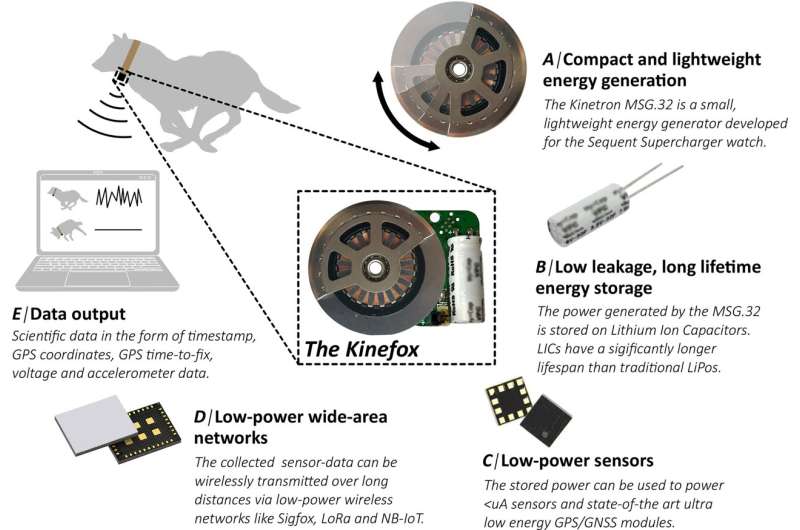June 8, 2023 report
This article has been reviewed according to Science X's editorial process and policies. Editors have highlighted the following attributes while ensuring the content's credibility:
fact-checked
peer-reviewed publication
trusted source
proofread
A tracking device that uses animal movements as a power source

A team of zoologists, animal behaviorists and engineers from the Natural History Museum of Denmark, University of Copenhagen, the Max Planck Institute of Animal Behavior and the Technical University of Denmark has developed a device for tracking wild animals using their movements as a kinetic energy source. Their study is reported on the open-access site PLOS ONE.
Scientists have used tracking devices for many years to learn more about the activities of wild animals when humans are not around to observe them. One thing they all have in common is the need for batteries to power the onboard sensors. This drawback means that researchers attempting to track an animal must either conclude their work when the battery power runs out or recapture the tagged animal to replace the batteries.
Replacing batteries is time-consuming, expensive and stressful for the animals being tracked. In this new effort, the research team reasoned that the obvious solution is to develop a tracking device that does not run on batteries. After noting that some modern watches derive their power from body movements, the team set about developing a tracking device that could be powered the same way.
After some trail and error, the researchers came up with a tiny generator powered by a tiny pendulum swinging inside of a closed device. As the pendulum swings in reaction to movements by the animal to which the tracker has been attached, it forces a ferromagnetic ring to slide across a copper coil, generating current. That current is then directed to a lithium supercapacitor.
The stored current is then used to power the sensors, which include an accelerometer, GPS unit and CPU—all the components are enclosed in a waterproof case. The finished product weighed just 5.3 ounces.
The team first tested the tracker on their pet dogs. They found that walking the dogs for an hour and a half generated enough power to run the tracker for the rest of the day. They next tested the tracker on wild bison roaming bogs in Denmark and ponies living on the Danish island of Langeland. The tracker was capable of running all day, every day, allowing full-time tracking without the need for battery replenishment. They note that the tracking devices on the ponies had run for 147 days prior to the publishing of their paper.
More information: Troels Gregersen et al, A novel kinetic energy harvesting system for lifetime deployments of wildlife trackers, PLOS ONE (2023). DOI: 10.1371/journal.pone.0285930
Journal information: PLoS ONE
© 2023 Science X Network


















